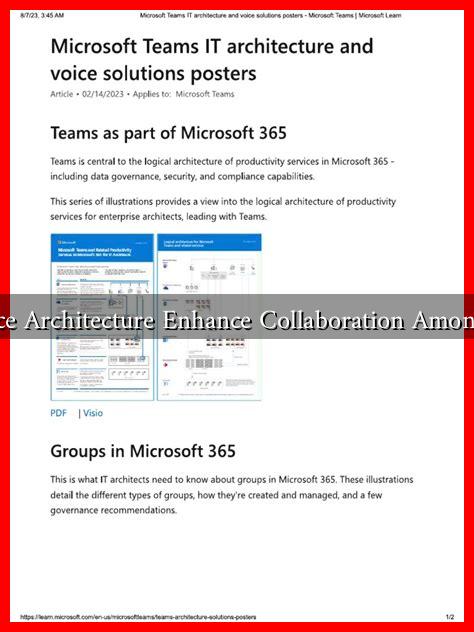-
Table of Contents
Can Office Architecture Enhance Collaboration Among Teams?
In today’s fast-paced business environment, collaboration is more crucial than ever. As organizations strive to foster innovation and creativity, the design of office spaces has emerged as a key factor in enhancing teamwork. This article explores how office architecture can significantly influence collaboration among teams, supported by research, case studies, and practical examples.
The Role of Office Design in Collaboration
Office architecture encompasses more than just aesthetics; it plays a vital role in shaping the interactions and dynamics within teams. A well-designed workspace can facilitate communication, encourage social interactions, and ultimately enhance productivity. Here are some ways in which office design can promote collaboration:
- Open Spaces: Open-plan offices are designed to reduce barriers between employees, fostering spontaneous conversations and collaboration. Research from the Harvard Business Review indicates that employees in open offices communicate 20% more than those in traditional cubicles.
- Flexible Work Areas: Incorporating flexible workspaces, such as movable furniture and multi-purpose rooms, allows teams to adapt their environment based on their needs. This adaptability can lead to increased collaboration, as teams can easily reconfigure spaces for brainstorming sessions or group projects.
- Breakout Zones: Designated areas for informal meetings or relaxation can encourage employees to step away from their desks and engage with colleagues. These spaces can serve as incubators for new ideas and foster a sense of community.
Case Studies: Successful Office Designs
Several companies have successfully implemented innovative office designs that enhance collaboration. Here are a few notable examples:
- Google: Known for its creative workspaces, Google’s offices feature open layouts, collaborative zones, and recreational areas. The company’s design philosophy emphasizes the importance of play and relaxation, which has been shown to boost creativity and teamwork.
- Airbnb: The Airbnb headquarters in San Francisco is designed to reflect the company’s culture of belonging. The open floor plan encourages employees to interact, while themed meeting rooms inspired by different travel destinations promote a sense of adventure and collaboration.
- WeWork: As a co-working space provider, WeWork has mastered the art of collaborative design. Their spaces are equipped with communal areas, private meeting rooms, and event spaces that encourage networking and teamwork among diverse groups of professionals.
Statistics Supporting Collaborative Office Design
Numerous studies have highlighted the positive impact of office design on collaboration. Here are some compelling statistics:
- A study by the University of Sydney found that employees in open-plan offices reported a 15% increase in collaboration compared to those in traditional office settings.
- According to a report by Gensler, 70% of employees believe that their workplace design affects their ability to collaborate effectively.
- Research from Steelcase indicates that 88% of employees feel more engaged when they work in collaborative environments.
Challenges and Considerations
While open and collaborative office designs have many benefits, they are not without challenges. Some employees may find open spaces distracting, leading to decreased productivity. It is essential for organizations to strike a balance between collaboration and individual focus. Here are some considerations:
- Noise Management: Implementing sound-absorbing materials and designated quiet zones can help mitigate distractions in open offices.
- Personal Space: Providing employees with options for private workspaces can cater to those who require solitude to concentrate.
- Culture Fit: The design should align with the company culture and the nature of the work being done. Not all industries benefit from the same layout.
Conclusion
In conclusion, office architecture plays a pivotal role in enhancing collaboration among teams. By thoughtfully designing workspaces that promote communication, flexibility, and community, organizations can create environments that foster innovation and productivity. As demonstrated by successful case studies and supported by research, the right office design can lead to significant improvements in teamwork and employee engagement. As businesses continue to evolve, investing in collaborative office architecture will be essential for staying competitive in the modern workplace.
For more insights on office design and its impact on collaboration, you can explore resources from Gensler and Steelcase.


